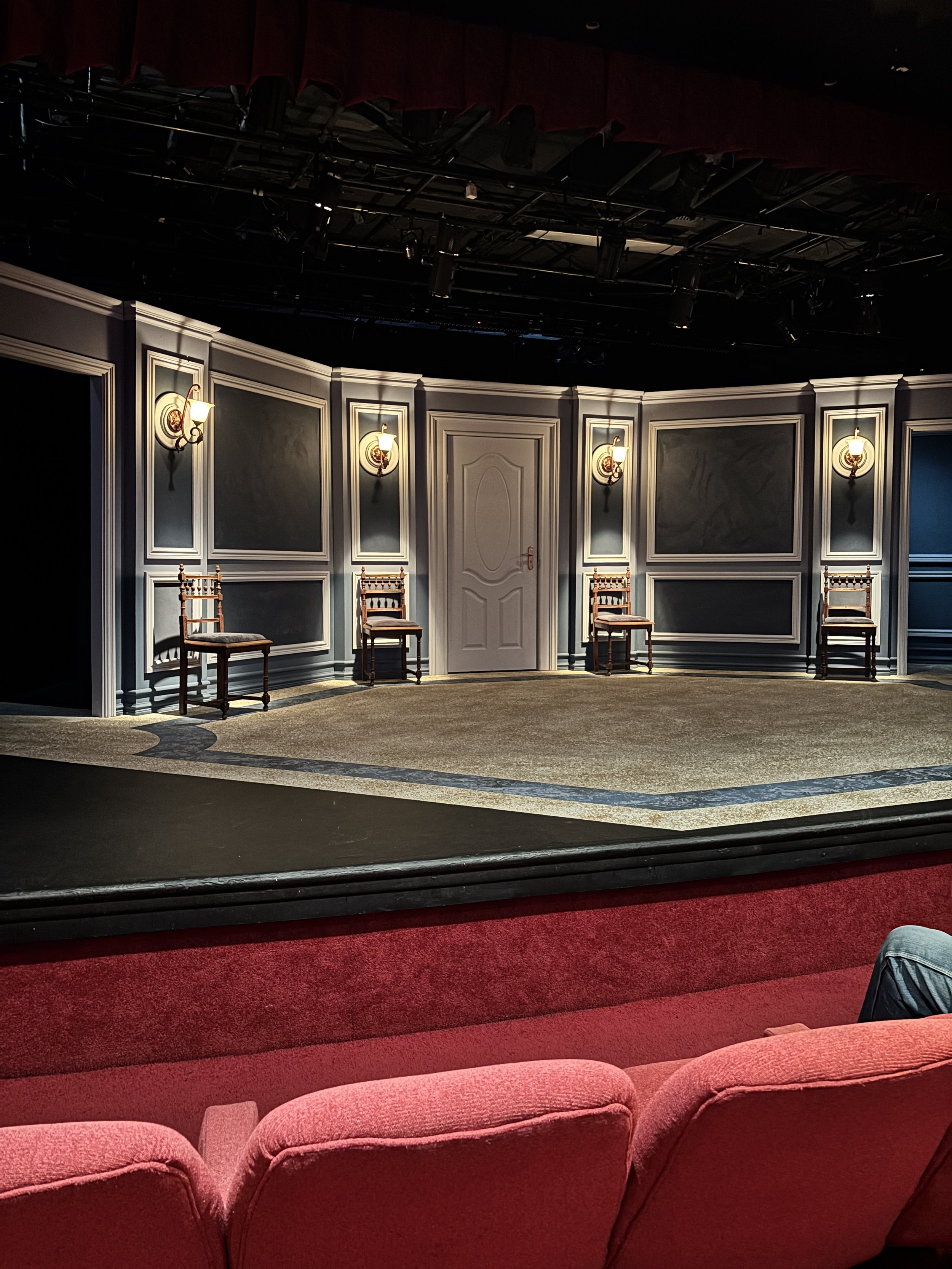Prisons of Our Own Making: The Revelatory Power of 'A Doll's House, Part 2’
A Doll’s House, Part 2 (Review)
A brilliantly acted exploration of self-imposed narratives, 'A Doll's House, Part 2' invites us to question the stories we tell ourselves - resulting in a raw, funny, and profoundly moving theatrical experience that resonates long after the final bow
Last night, I found myself seated in Theatre on the Square, wondering what would happen when Nora Helmer walked back through the door she famously slammed 15 years ago. Lucas Hnath's A Doll's House, Part 2, directed by Barbara Rubin, doesn't just answer this question - it shatters expectations with the same revolutionary spirit as Ibsen's original.
From the moment Bianca Amato stepped onto Greg King's beautifully minimalist set as Nora, I was captivated. The sparse staging - cleverly leaving the actors room to breathe - allowed Hnath's razor-sharp dialogue to take centre stage. There's something powerful about watching four characters dissect marriage, freedom, and self-determination in a space that feels both intimate and expansive.
What struck me most profoundly about this production was its examination of how we construct prisons of our own making through the stories we tell ourselves. As I watched Nora and Torvald circle each other - each armed with fifteen years of rehearsed narratives about their separation - I recognized a pattern all too familiar in my own life. How often do we craft elaborate explanations for others' actions without ever verifying them? Hnath's brilliant script exposes this tendency with surgical precision.
Nora returns having built an entire identity around her rejection of marriage as an institution, while Torvald has created his own narrative about abandonment and victimhood. Both characters have calcified these stories into supposed truths, using them as shields against vulnerability. When Zane Meas's Torvald finally erupts in the climactic scene, I felt the devastating weight of untested assumptions - how we presume to know what others think rather than engaging in the terrifying work of actual conversation.
The production brilliantly illustrates how these internal narratives don't just shape our understanding of past events, but how they actively construct our present reality and limit our future possibilities. Charlotte Butler's Anne Marie delivers this truth with biting clarity when she confronts Nora about the consequences of her grand philosophical stance. These characters have each locked themselves in cells fabricated from their own unexamined beliefs, from Emmy's rejection of her mother's choices to Nora's absolutist view of marriage.
What makes the play so uncomfortably familiar is how it mirrors our own tendency toward binary thinking. Throughout the performance, I caught myself wanting to side completely with either Nora or Torvald, seeking the comfort of a clear hero and villain. But the production refuses such simplicity. Instead, it forces us to sit with the complex reality that we are all simultaneously victims and perpetrators, wise and foolish, right and wrong.
In one particularly powerful moment, when Nora finally stops her rehearsed speech about freedom and truly listens to Torvald, I saw the fleeting possibility of liberation from these narratives. The delicate balance between certainty and openness played across her face - the terrifying realization that perhaps her entire worldview might require revision. Those deliberately awkward silences that punctuate the production aren't just theatrical devices; they're moments where characters hover between their comfortable stories and potentially disruptive truths.
Perhaps most poignantly, the play demonstrates how even our liberating stories can become new prisons. Nora's emancipation narrative, revolutionary fifteen years ago, has hardened into dogma that prevents genuine connection. Her insistence that "marriage is impossible" echoes with the same absolutism she once fought against. I recognized how my own moments of personal growth and insight have sometimes calcified into rigid identity markers that no longer serve me.
The non-clichéd ending embraces this tension without resolving it. When Nora and Torvald finally have the conversation they should have had fifteen years earlier, the play doesn't offer neat resolution. Instead, it suggests that freedom might not lie in finding the "correct" narrative, but in holding our stories lightly enough to revise them when confronted with new understanding. The most imprisoned characters are those most certain of their rightness.
As I left the theatre, I found myself questioning which of my own narratives might be limiting my experience of reality. How often do I play three-dimensional chess in my mind, attributing motives and thoughts to others based solely on my interpretation of their actions? How might my relationships transform if I approached them with genuine curiosity rather than pre-written scripts? The production's genius lies in making these philosophical questions deeply personal and urgently relevant.
In a time when polarization drives us toward increasingly rigid storytelling about ourselves and others, A Doll's House, Part 2 offers a radical alternative: the possibility that our most cherished narratives might benefit from revision, that assumptions left unexamined become prisons, and that freedom might lie not in slamming doors but in the courage to walk back through them, ready for difficult conversations.
Barbara Rubin's direction, together with stellar performances from the entire cast, creates a theatrical experience that's both intellectually stimulating and emotionally resonant. This is theatre that doesn't just entertain - it challenges, provokes, and ultimately transforms our relationship with the stories we tell ourselves.
If you're looking for a production that will make you laugh, think, and perhaps reconsider your own assumptions about relationships, A Doll's House, Part 2 at Theatre on the Square is absolutely unmissable. Like Nora herself, this play refuses to fit into anyone's box - and we're all the better for it.
